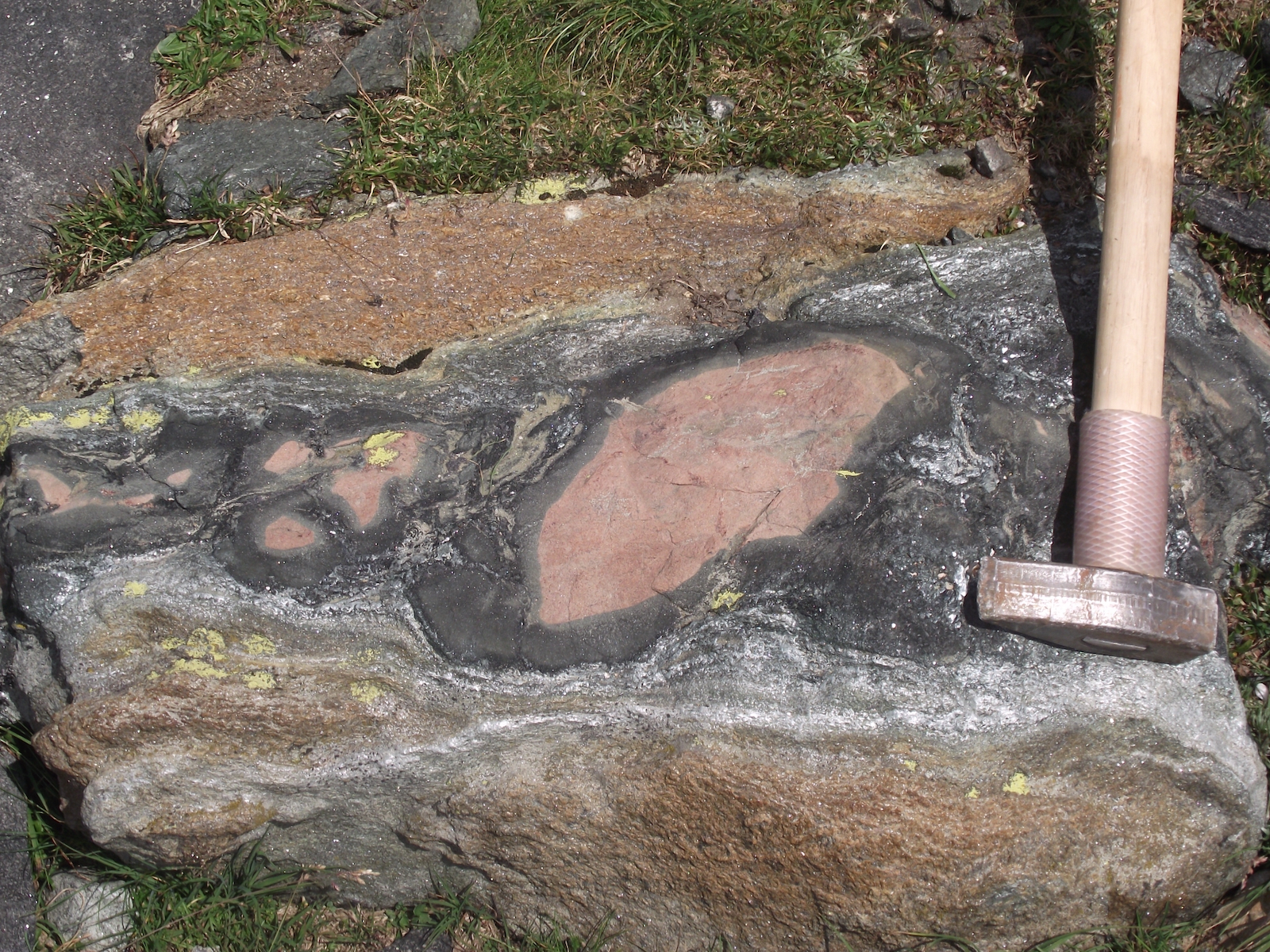
The student will get familiar with the processes, from the sub-grain scale to the scale of global tectonics, that govern the Earth dynamics.
In particular:
Basic concepts of rock deformation
1) Stress
2) Strain
3) Rheology
4) Brittle failure
5) Lattice defects and crystal-plastic deformation
6) Fault rocks s.l.
7) Rheological stratification of the lithosphere
Structure of the Earth’s interior
1) Sources of information (seismic waves; mountain chains; meteorites; inclusions in magmatic rocks and diamonds; laboratory experiments; computational modelling)
2) Principal discontinuities/layers in the Earth (crust, mantle, core)
Plate tectonics
1) Sources of information (Earth topography; volcanism and seismicity distribution; composition; plate movement (GPS); age and magnetism of oceanic rocks)
2) Mosaic of the main plates and types of boundaries
• Divergent margins 1 (MOR)
1) Fast- and low-speading MOR
2) MOR magmatism
3) Oceanic metamorphism and serpentinization. Metasomatism.
4) MOR seismicity
5) “oceanic” sediments
6) Mineralogy: Serpentine(s)
• Divergent margins 2 (Rifts)
1) Rift structure and evolution with time
2) Continental margins
3) Large scale lithospheric extension. Symmetry/Asymmetry
4) Alkaline magmatism in rifts
5) HT/LP metamorphism and crustal anatexis in rifting crust
6) S-type granites.
7) Mineralogy: Polymorphism and the Al2SiO5 system. Carbon and graphitization as a geothermometer.
• Convergent margins 1 (subduction zones and Arcs)
1) Driving forces of subduction
2) The subduction factory: lithological and thermal structure
a. Seismicity
▪ Intermediate earthquakes (double layer)
▪ Seismic tremors and slow earthquakes
▪ The subducting slab
▪ The mantle wedge
▪ The magmatic arc
▪ The accretionary wedge
3) Metamorphism and magmatism in the subduction zone
▪ HP/LT metamorphism of mafic rocks and metasediments
▪ Devolatilization, densification
▪ Mantle metasomatism and melting
▪ Calc-alkaline magmatism and MASH processes
▪ Arc magmatism and volcanism
▪ Making new continental crust
4) H2O budget in a subduction zone
5) Mineralogy: Pressure and density in minerals.
6) Mineralogy: Amphibole throughout subduction zones
7) Mineralogy: NAMS
• Convergent margins 2 (Collision and Orogenic Belts)
1) Collisional belts
2) P-T-t-d paths in the Subduction and Exhumation of HP rocks
3) Deformation/crystallization relationships
4) Strain partitioning from the chain scale to the thin section
5) The small t: petrochronology
6) Clockwise paths of orogenic belts
7) Orogenic magmatism and leucogranites
8) Mineralogy: geobarometry with inclusion-host systems
9) Mineralogy: “extra” components and thermobarometry (Mn in Grt, Ti in Bt
10) Alpine orogenic chain
• Transcurrent margins
• Intraplate settings
11) Oceanic
▪ Hot spots and OIB
▪ How deep in the mantle?
12) Continental
▪ Continental Flood Basalts
▪ Kimberlites
In particular:
Basic concepts of rock deformation
1) Stress
2) Strain
3) Rheology
4) Brittle failure
5) Lattice defects and crystal-plastic deformation
6) Fault rocks s.l.
7) Rheological stratification of the lithosphere
Structure of the Earth’s interior
1) Sources of information (seismic waves; mountain chains; meteorites; inclusions in magmatic rocks and diamonds; laboratory experiments; computational modelling)
2) Principal discontinuities/layers in the Earth (crust, mantle, core)
Plate tectonics
1) Sources of information (Earth topography; volcanism and seismicity distribution; composition; plate movement (GPS); age and magnetism of oceanic rocks)
2) Mosaic of the main plates and types of boundaries
• Divergent margins 1 (MOR)
1) Fast- and low-speading MOR
2) MOR magmatism
3) Oceanic metamorphism and serpentinization. Metasomatism.
4) MOR seismicity
5) “oceanic” sediments
6) Mineralogy: Serpentine(s)
• Divergent margins 2 (Rifts)
1) Rift structure and evolution with time
2) Continental margins
3) Large scale lithospheric extension. Symmetry/Asymmetry
4) Alkaline magmatism in rifts
5) HT/LP metamorphism and crustal anatexis in rifting crust
6) S-type granites.
7) Mineralogy: Polymorphism and the Al2SiO5 system. Carbon and graphitization as a geothermometer.
• Convergent margins 1 (subduction zones and Arcs)
1) Driving forces of subduction
2) The subduction factory: lithological and thermal structure
a. Seismicity
▪ Intermediate earthquakes (double layer)
▪ Seismic tremors and slow earthquakes
▪ The subducting slab
▪ The mantle wedge
▪ The magmatic arc
▪ The accretionary wedge
3) Metamorphism and magmatism in the subduction zone
▪ HP/LT metamorphism of mafic rocks and metasediments
▪ Devolatilization, densification
▪ Mantle metasomatism and melting
▪ Calc-alkaline magmatism and MASH processes
▪ Arc magmatism and volcanism
▪ Making new continental crust
4) H2O budget in a subduction zone
5) Mineralogy: Pressure and density in minerals.
6) Mineralogy: Amphibole throughout subduction zones
7) Mineralogy: NAMS
• Convergent margins 2 (Collision and Orogenic Belts)
1) Collisional belts
2) P-T-t-d paths in the Subduction and Exhumation of HP rocks
3) Deformation/crystallization relationships
4) Strain partitioning from the chain scale to the thin section
5) The small t: petrochronology
6) Clockwise paths of orogenic belts
7) Orogenic magmatism and leucogranites
8) Mineralogy: geobarometry with inclusion-host systems
9) Mineralogy: “extra” components and thermobarometry (Mn in Grt, Ti in Bt
10) Alpine orogenic chain
• Transcurrent margins
• Intraplate settings
11) Oceanic
▪ Hot spots and OIB
▪ How deep in the mantle?
12) Continental
▪ Continental Flood Basalts
▪ Kimberlites
- Teacher: Bernardo Cesare
- Teacher: Fabrizio Nestola
- Teacher: Giorgio Pennacchioni
